By Ludovic Brucker
Kulusuk, 29 March 2014 — For our deployment to the field, we need two flights to bring our scientific equipment and camping gear. As mentioned in our previous post, we decided to avoid being on the ice sheet while the third storm system of the week affects the area. However, thanks to Air Greenland and its helicopter B-212’s crew, we were able to have a first cargo flight to the ice sheet on Thursday afternoon. This will allow us to be fully operational as soon the second flight brings our tents, food, more science gear, and us to the ice sheet!
Thursday morning, we went to the airport to meet with the pilot and hear his point of view about a possible cargo flight that same day. While snow-removing activities of the runway were underway, he shared with us his concern that our cargo (if left on the ice sheet with the current weather system developing offshore) may be blown away or heavily buried in snow. Since we did not have a single item fly away in Antarctica during our SEAT 2011-2012 traverse and its Christmas storm, we will make sure this does not happen in Greenland! Regarding buried items; it’s fine as long as the shovels aren’t buried themselves.
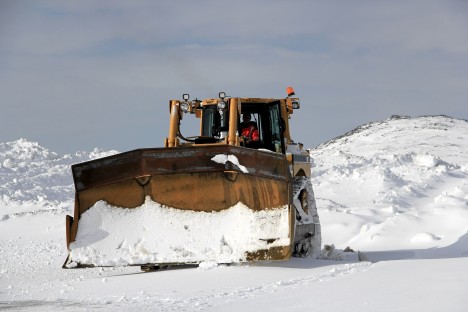
A snow plow removes snow from the second storm of the week at the Kulusuk airport . (credit: Clément Miège.)
In the afternoon, Clem and I took off with the cargo flight to unload it from the helo, and to build the cargo line. The sky was scattered with clouds, sometimes low, but it cleared up as we were approaching the ice sheet.
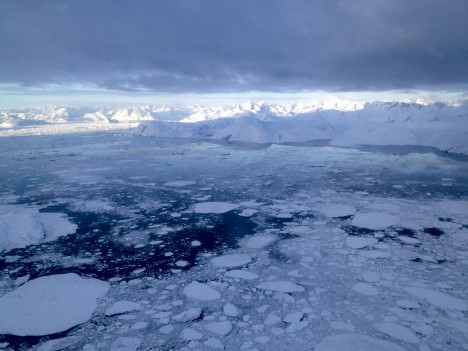
Transit from Kulusuk to our ice sheet location, near the settlement of Tinitequilâq. (Credit: Ludovic Brucker.)
We landed in the vicinity of our temperature probe system and its Argos antenna, which has been sending temperature measurements every day for almost a year now. With the help of the helicopter’s crew, it did not take long to organize a cargo line along the dominant wind direction to minimize snow drift.

Our cargo line on the ice sheet, near the temperature probe and Argos antenna we left behind in 2013. I’m finishing up by deploying a second cargo strap across the line and through the boxes handles. (Credit: Clément Miège)
Our objective was accomplished, the cargo was on the ice sheet. Step 1: Done! Done? Well, of course not. We still had to fly back… But in spite of everyone’s effort, we were not able to fly back to Kulusuk that day. The night was coming quickly and the pilot is not allowed to fly after twilight. Thus, we landed in Tasiilaq 3 minutes after twilight on Thursday. Tasiilaq is on the other side of the bay from Kulusuk, a 15-minute helicopter ride away. Tasiilaq is the largest city on the East coast of Greenland, with about 3,000 inhabitants, and it’s home for the B-212. We landed accurately on the B-212’s kart in front of its hangar so that it could be moved inside quickly. Suddenly, Clem and I were facing a situation for which we were not prepared.
For a less-than-2-hour round trip to the ice sheet, Clem and I were dressed in our warmest layers, and to face a variety of eventualities (including spending an unexpected night on the ice sheet) we had packed a tent, sleeping bags, food, water, extra jackets, gloves, goggles and hats, a satellite phone, two GPS, and a beacon locator. We knew that in our cargo there was more food, a cook stove, propane and white gas; these were in case for the inbound flight. For the outbound flight, we knew that the B-212 has some safety equipment too. That was all we had. But we were facing a different situation now: we were in the largest town of East Greenland, with the perspective of a storm arriving overnight, and forecasted to last several days.
Air Greenland found us a hotel and a warm dinner. Sweet, we wouldn’t be camping on the helipad. Past the first night, we woke up with the exact same landscape as in Kulusuk. I’m serious! Through the windows we could see the same white sky, land, and horizontal snowfall. Visibility? We still don’t know for sure; neither Clem nor I could tell because we had left Kulusuk with our contact lenses on and did not carry our glasses.
Past this first reality check, we headed to breakfast (dressed in our long underwear). We had a specific topic to discuss: what were we going to do during the next hours, days, week? The ideas ranged from finding a book, a toothbrush, an Internet connection, an alternative to water for our contact lenses, learning Greenlandic, finding a boat… Three hours after breakfast, we started a hunt for a set of playing cards to play cribbage. I asked the hotel manager if we could borrow cards from the hotel, or any other game that would keep us busy a few hours, days, a week. He pointed out a souvenir store where we could buy such items. Well, despite knowing that one should take his passport to the field, we did not have money. The hotel manager had a swift idea: “That’s not a problem, you can wash dishes after lunch.” Good times! So, we registered for being the little hands in the kitchen. The next 15 minutes were funny, I was trying to explain this to Clem, and to convince him that it was no joke at all. After lunch, we would be on dish wash duty, dressed in long underwear, and without glasses.
I left for a minute to go back to the room and heard Clem running toward me: “Dress up, we are leaving! The helicopter will take off within the next hour. We must go the airport right now.” Ha, ha, funny Clem, you thought I was joking with washing the dishes, and now you feel the need to make a joke too, but I ain’t a silly fool, and it’s not April 1st yet. Well, when I saw Clem dressing up, and tightening his shoes in a hurry without wasting time to comment further on his statement, let me tell you, I quickly dressed up too! I could not risk missing that flight, if it happened.
Air Greenland was able to fly us back to Kulusuk using a French-made helicopter (an Ecureuil – an Astar helicopter) flown by an Icelandic pilot. Certainly, he was used to windy conditions, and low visibility. We were reunited with Rick for lunch in Kulusuk!
We would like to thank Air Greenland for their dedication to serving our project yesterday and today. Working with us on a flexible schedule to get the cargo flight in yesterday was a big help. Accommodating us in Tasiilaq and getting us back to Kulusuk this morning allowed us to be ready for the next opportunity to fly to the ice sheet so we can begin our experiments. A continued good relationship with Air Greenland and their pilots is important for the success of our science. We view them as team members critically needed to move forward with a successful campaign.
Tags: Arctic, climate change, cryosphere, drilling, Greenland, ice, ice sheet, NASA, polar




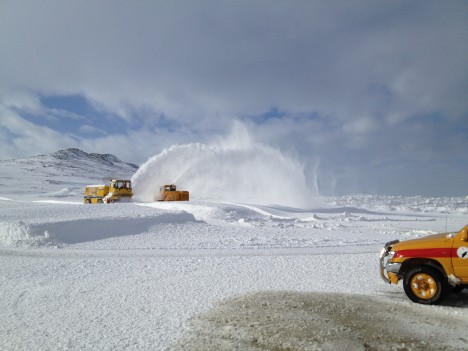
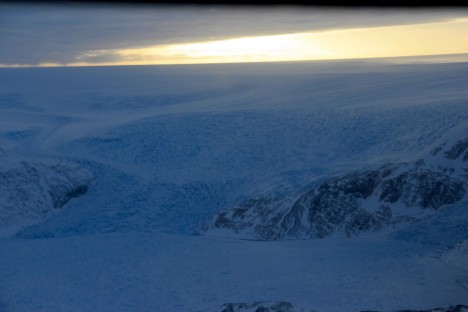
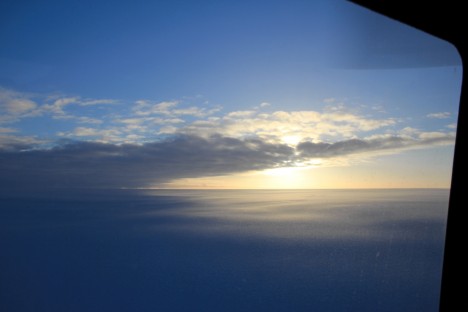
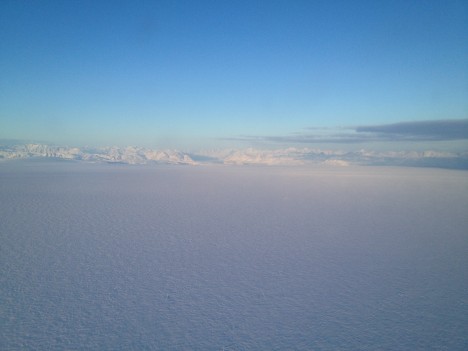
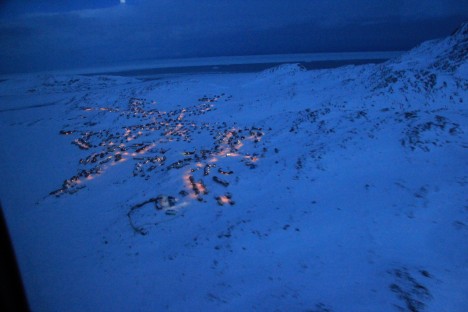
coincidental Vizzini quote from the Princess Bride:
“And YOU: friendless, brainless, helpless, hopeless! Do you want me to send you back to where you were? Unemployed, in Greenland?”
Great reading, thanks for the updates from the field.
Let’s hope the iWS will survive this extreme climate!
Best wishes from Utrecht,
Michiel